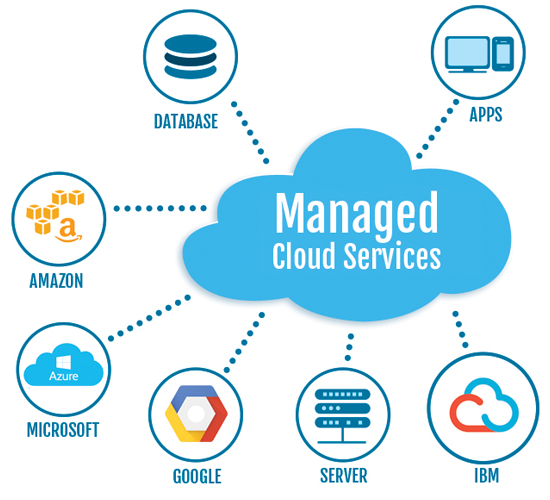Why Choose LinkDaddy Cloud Services: Benefits and Attributes Explained
Why Choose LinkDaddy Cloud Services: Benefits and Attributes Explained
Blog Article
Achieve Seamless Scalability With Cloud Provider
In the ever-evolving landscape of cloud solutions, achieving smooth scalability stands as a cornerstone for contemporary services seeking to remain versatile and affordable. The pursuit for seamless scalability with cloud solutions introduces a globe of possibilities for those prepared to embrace the transformative power of vibrant resource monitoring.
Benefits of Cloud Scalability
Cloud scalability provides companies the versatility to dynamically change sources based upon demand, making certain optimal performance and expense performance. One key advantage is the capacity to scale resources up or down swiftly in feedback to varying work. This dexterity makes it possible for businesses to satisfy transforming client demands without over-provisioning sources, inevitably bring about cost savings. Scalability also enhances performance by making sure that systems can take care of raised traffic or workload without experiencing downtime or downturns. By effectively alloting sources, organizations can keep high degrees of efficiency during peak times without unneeded expenses throughout quieter periods. In addition, cloud scalability promotes development and experimentation by enabling companies to easily check originalities and scale them as needed. This versatility encourages a society of continual renovation and adjustment, making it possible for companies to remain affordable in a quickly progressing market landscape. Eventually, the benefits of cloud scalability extend past expense savings to encompass improved efficiency, agility, and innovation.
Trick Functions for Scaling
Effective scaling in cloud services depends on essential features that allow organizations to adjust sources dynamically based on need. Another essential function is scalability, allowing systems to handle raised work by adding sources seamlessly. Overall, these vital attributes collectively empower organizations to accomplish seamless scalability in cloud services.
Executing Auto-Scaling Techniques
To efficiently enhance resource allocation and adapt to varying work, organizations should strategically implement auto-scaling approaches in their cloud solutions framework. Auto-scaling enables systems to immediately change the variety of calculate resources based on real-time demand. There are different auto-scaling techniques that companies can use, such as anticipating scaling, which makes use of historical information to forecast future source demands, and responsive scaling, which replies to existing workload modifications.

Ideal Practices for Scalability
For organizations aiming to boost their scalability in cloud services, executing finest practices is essential for optimum efficiency and resource monitoring. One secret best technique is developing applications with a microservices architecture. This strategy breaks down like this applications into smaller, independent solutions that can be released, upgraded, and scaled separately, permitting greater flexibility and scalability.
An additional crucial practice is making use of containerization modern technology, such as Docker or Kubernetes. Containers make it possible for the packaging of applications and their dependencies right into separated systems, making it easier to scale elements independently and release them consistently across different settings.
Additionally, applying automated deployment and facilities as code (IaC) can streamline scalability initiatives (linkdaddy cloud services). Automation devices like Terraform or Ansible help in provisioning and taking care of resources effectively, go to this website decreasing hands-on mistakes and enabling fast scalability
Moreover, monitoring performance metrics, setting up signals, and carrying out regular capability preparation are important methods to make certain positive scalability monitoring. By sticking to these best practices, companies can attain smooth scalability in their cloud services while enhancing performance and source use.
Monitoring Performance Metrics
When examining the performance of cloud services scalability, carefully checking efficiency metrics is essential for guaranteeing optimal capability and resource allocation. By constantly tracking essential performance indicators (KPIs) such as action times, latency, resource, and throughput use, companies can obtain valuable understandings right into the wellness and performance of their cloud infrastructure. Keeping track of efficiency metrics permits the early discovery of prospective bottlenecks or concerns that might impact scalability, making it possible for proactive actions to be taken to resolve them before they escalate.

Final Thought
In final thought, achieving seamless scalability with cloud services is vital for companies to maximize performance, improve technology, and preserve high efficiency levels during peak times. By leveraging the benefits of cloud scalability, implementing auto-scaling strategies, utilizing crucial features such as elasticity and automation, and following finest techniques like application design and efficiency tracking, organizations can successfully scale their systems while maximizing resource utilization and performance.
The pursuit for seamless scalability with cloud solutions reveals a globe of opportunities for those willing to embrace the transformative power of dynamic source management.
Cloud scalability supplies organizations the adaptability to dynamically change sources based on demand, guaranteeing optimum performance and cost performance. One more key feature is scalability, enabling systems to handle raised work by adding resources effortlessly.For companies aiming to improve their scalability in cloud services, executing best more helpful hints practices is critical for optimum performance and resource administration.When examining the efficiency of cloud services scalability, carefully checking performance metrics is crucial for guaranteeing optimum functionality and resource appropriation.
Report this page